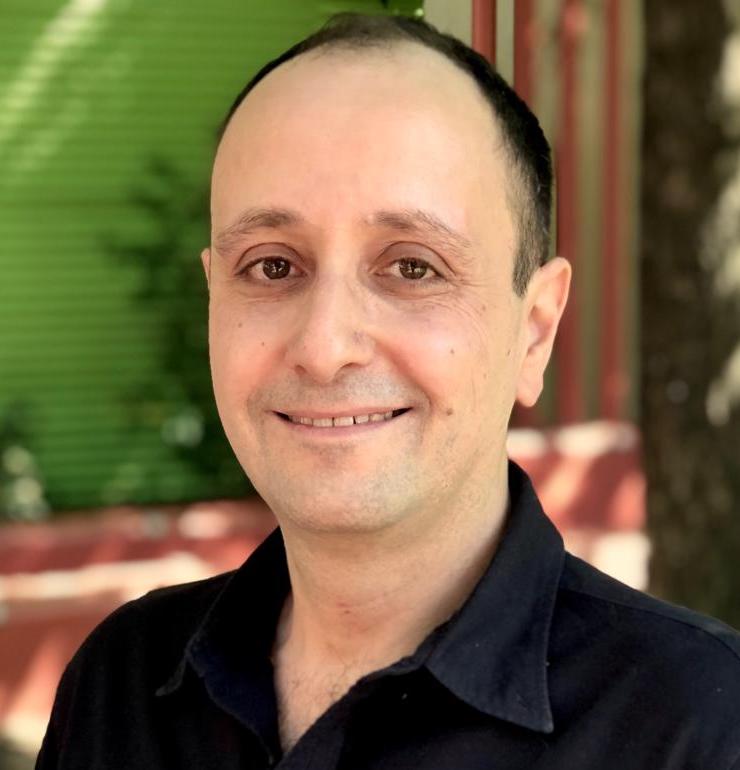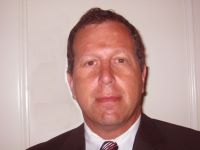FRE’s Newest Faculty
The Department of Finance and Risk Engineering continues to grow and diversify with a new crop of instructors.
Ernest Baver

Ernest Baver jokes that after he earned a Ph.D. in theoretical physics from the Weizmann Institute of Science and was first hired by Bloomberg as a quant, he barely knew what a portfolio was. His initial assignment involved a paper by none other than FRE chair Peter Carr, lending a nice symmetry to a career path that recently brought him to Tandon to teach a practical introduction to quantitative trading.
That path includes stops at SAC Capital, the Clinton Group, Credit Suisse, Hutchin Hill Capital, and Weld Capital Management – a firm where he currently serves as a senior quantitative researcher and which is known for its use of non-conventional data sets and interdisciplinary alpha harvesting.
His goal in the classroom, he says, is to encourage lively discussion, present the material in engaging ways, and provide the support students need to succeed. “We aren’t going to dwell too much on the theoretical,” he asserts. “This will be a solid, practical overview that will serve them well in the future and that I think they’ll enjoy.”
Although this will be Baver’s first experience teaching at NYU, he is no stranger to the school. In 2011 he studied screenwriting over on Washington Square. “I do have a work in progress, and as you might expect, it takes place on Wall Street,’ he says. “It’s a dark but comedic coming-of-age story about a young trader, and I should warn you if you ever read it, it has its share of profanities and violence.”
With a life that has taken him to Russia, France, Israel, and England, among other locales, and a career that has seen him go from total novice to university instructor, it’s hard to believe that any fictional screenplay could be more interesting than real life.
Jon Hill

Jon Hill’s area of expertise is the relatively new field of quantitative model governance. “While model validation addresses the risks within quantitative models, model governance addresses risks within a firm’s extended model ecosystem that are outside and between models, such as model interdependence,” he explains.
He is fond of a quote from a British statistician named George Box, who famously said, “All models are wrong; the practical question is how wrong they have to be to not be useful.” There can come a point, however, as Hill points out, at which a model is so wrong that it ceases to be useful at all; model validation and governance address that issue, with the validation process examining the standalone model and determining if it is fit for purpose, while model governance is responsible for the holistic fitness of a firm’s entire model ecosystem, which can include several thousand models at leading financial firms.
Over the course of his long career, Hill has performed hands-on model validations at Solomon Smith-Barney (which later became Citigroup); headed the Risk Model Validation Group (RMVG) at Morgan Stanley, where he was charged with creating and training a new ground-up model validation quant team; and served as Global Head of Model Risk Governance at Credit Suisse where his team had responsibility for the ongoing identification, measurement, risk rating, inventory and monitoring of corporate model risk across all of the company’s business units, regions and legal entities.
Finance professionals who perform model validation and governance roles are members of a technical specialty class known as “quants” in the industry. “This is still a fairly small world,” Hill says. “You’ve heard of ‘six degrees of separation,’ but in the financial quant world it’s more apt to be ‘three degrees of separation.’”
Hill, who regularly publishes in such outlets as the Journal of Structured Finance₁ and Journal of Risk Management in Financial Institutions₂, just may be among one of the most recognized figures in the growing world of model risk governance: he is frequently called upon to chair conferences, give keynote presentations, and organize workshops around the globe, and he currently heads the New York Chapter of the Model Risk Managers International Association (MRMIA), whose purpose is to promote awareness of model risk to the broader risk and financial communities and to provide a forum for discussion of the challenges and regulatory requirements in the field.
Model risk governance could offer a compelling career path for Tandon’s FRE students. Given how rare it is to encounter someone with experience in the field, Hill predicts that once they have completed his course, Model Risk Management and Governance, grads may, in all likelihood, be going into job interviews knowing more about the topic than even those who will be interviewing them.
1. Hill, J. R. (2018) “Shouldn’t A Model ‘Know’ Its Own ID?”, The Journal of Structured Finance, Fall, pp. 89-98
2. Hill, J. R. (2019) “The 14 Top Challenges for Today’s Model Risk Managers: Has the Time Come to Think About Going Beyond SR11-7?”, The Journal Of Risk Management In Financial Institutions, Spring, Vol. 12, 2, pp. 145-167
Ali Nazari
Ali Nazari had always loved math, but during his early years in his native Iran, that discipline did not seem to him like the pathway to a stable job. He turned his sights instead to electrical engineering – an area, he reasoned, that still heavily involved mathematical skill while presenting better job prospects.
Once settled in the U.S. and studying for his graduate degrees at the University of Michigan, Nazari chose a challenging multidisciplinary path that allowed him to merge all of his interests, earning master’s degrees in electrical engineering, financial engineering, and mathematics and focusing his doctoral work on network information theory and digital communications.
He found some personal motivation in the financial crisis of 2008. “Of course, I was saddened that people were taking losses, but it was also exciting to see what could be learned from the situation,” he said. “And as a struggling grad student who actually had very little to lose, it presented opportunities. I bought my first stocks around then – I can still remember when I purchased Ford for $2.80 a share and was able to sell it within a year for $11.”
Nazari’s professional life has been no less challenging and multidisciplinary than his time as a student: after a stint at JPMIS, a newly created intelligent-solutions group at J.P. Morgan where he developed the company’s first big data approach to collateral management optimization, he set out to help found a new-generation asset management firm. He and his co-founders were intent on riding the wave of explosive growth in data relevant to pricing assets combined with enormous advances in machine learning.
Their company, Data Capital Management (DCM), where Nazari serves as chief investment officer and portfolio manager, is, in essence, an event-driven hedge fund, able to apply AI and machine-learning tools to the massive amounts of heterogeneous real-time data now being generated in order to make informed investment decisions.
Despite the demands that such a venture involves, Nazari, whose many honors include an IEEE Information Theory Society Best Student Paper Award, given to him in South Korea in 2009, loves academia and wants to stay active in that milieu as well. “I was thrilled to be invited to teach a course in AI and machine learning to Tandon’s FRE students,” he says. “The program is graduating a lot of talented fintech people, and there may be internship opportunities for them with DCM.”
His students, he hopes, will take a page from his playbook. “I’m a very competitive, driven person, with a lot of energy,” he says. “I think you have to be to get things done.”
Ken Winston

Ken Winston had no trouble at all deciding what he would cover in his Topics in Risk Management course at Tandon. “I’m teaching what I’d want anyone I hired to know,” he says. “With that knowledge mastered, they’ll be interesting candidates for any hiring manager in the field.”
Winston knows whereof he speaks: he has deep experience in a variety of industry positions and has hired numerous master and doctoral graduates. Among the posts on his CV are chief risk officer at Morgan Stanley Investment Management in New York and Western Asset Management in California. He recently retired from Western Asset Management and returned to New York.
“Retired,” however, is far from an accurate word to describe Winston. “I left industry because I wanted to immerse myself in academia,” he explains. “There are many papers I want to research and write.” The idea of teaching is not a new one for him – when he was based with Morgan Stanley in New York, he taught at Courant, and he has long been an economics lecturer at Caltech – so when he was ready to focus on this new phase in life, he reached out to FRE chair Peter Carr, who was happy to have the longtime industry professional on faculty.
Since 1998 Winston has held a leadership role in the Society for Quantitative Analysts, a group dedicated to supporting innovation in the field. “The monthly meetings involve a lecture on a topic of interest,” he says. “Students are welcome to join for a reduced fee, so I encourage them to take advantage of that.”




